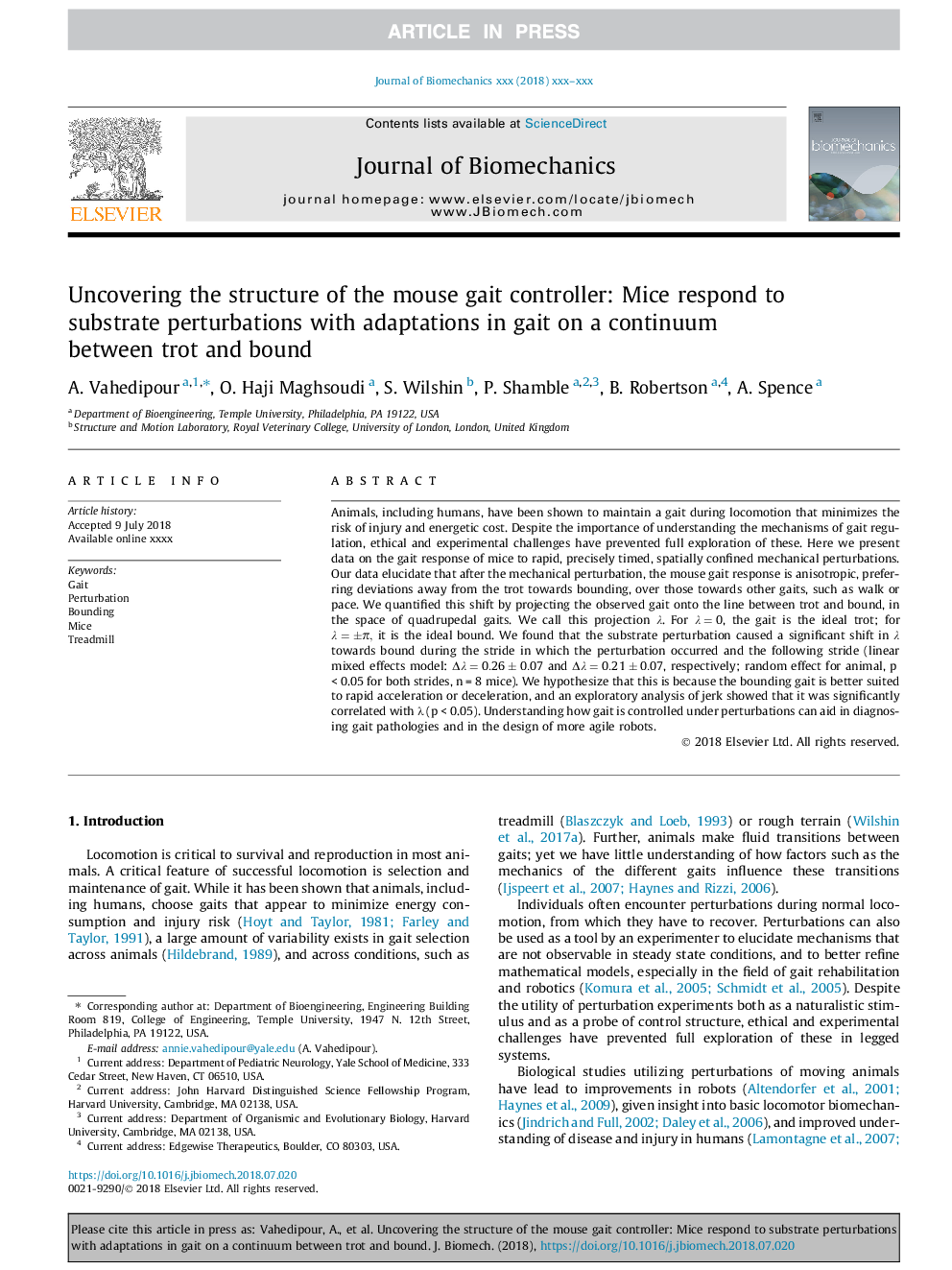| Article ID | Journal | Published Year | Pages | File Type |
|---|---|---|---|---|
| 8960651 | Journal of Biomechanics | 2018 | 10 Pages |
Abstract
Animals, including humans, have been shown to maintain a gait during locomotion that minimizes the risk of injury and energetic cost. Despite the importance of understanding the mechanisms of gait regulation, ethical and experimental challenges have prevented full exploration of these. Here we present data on the gait response of mice to rapid, precisely timed, spatially confined mechanical perturbations. Our data elucidate that after the mechanical perturbation, the mouse gait response is anisotropic, preferring deviations away from the trot towards bounding, over those towards other gaits, such as walk or pace. We quantified this shift by projecting the observed gait onto the line between trot and bound, in the space of quadrupedal gaits. We call this projection λ. For λ=0, the gait is the ideal trot; for λ=±Ï, it is the ideal bound. We found that the substrate perturbation caused a significant shift in λ towards bound during the stride in which the perturbation occurred and the following stride (linear mixed effects model: Îλ=0.26±0.07 and Îλ=0.21±0.07, respectively; random effect for animal, pâ¯<â¯0.05 for both strides, nâ¯=â¯8 mice). We hypothesize that this is because the bounding gait is better suited to rapid acceleration or deceleration, and an exploratory analysis of jerk showed that it was significantly correlated with λ (pâ¯<â¯0.05). Understanding how gait is controlled under perturbations can aid in diagnosing gait pathologies and in the design of more agile robots.
Related Topics
Physical Sciences and Engineering
Engineering
Biomedical Engineering
Authors
A. Vahedipour, O. Haji Maghsoudi, S. Wilshin, P. Shamble, B. Robertson, A. Spence,
